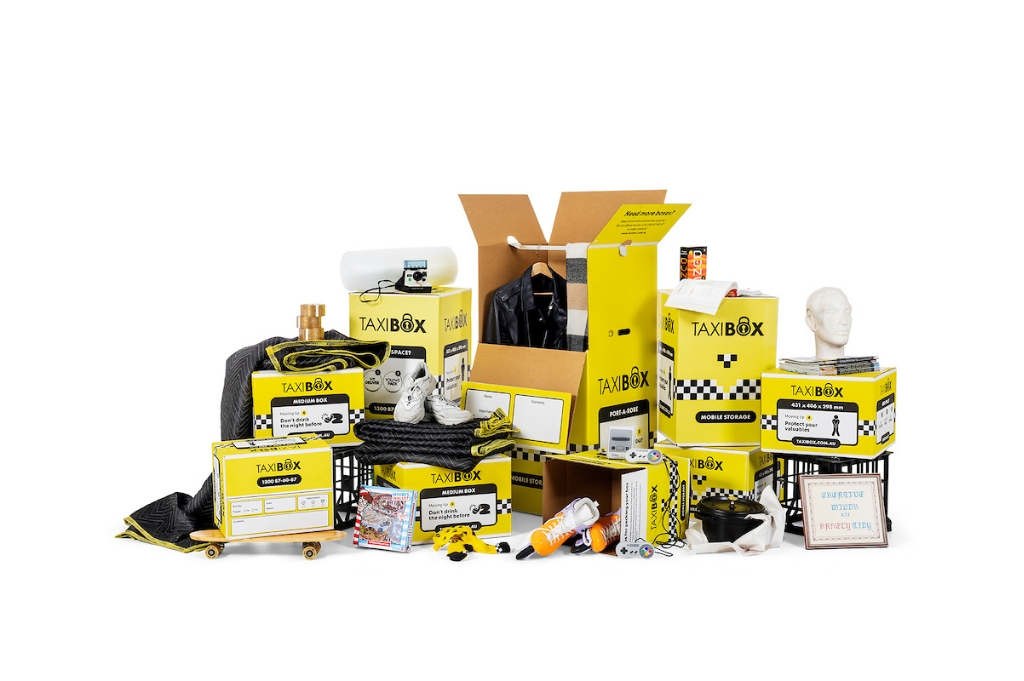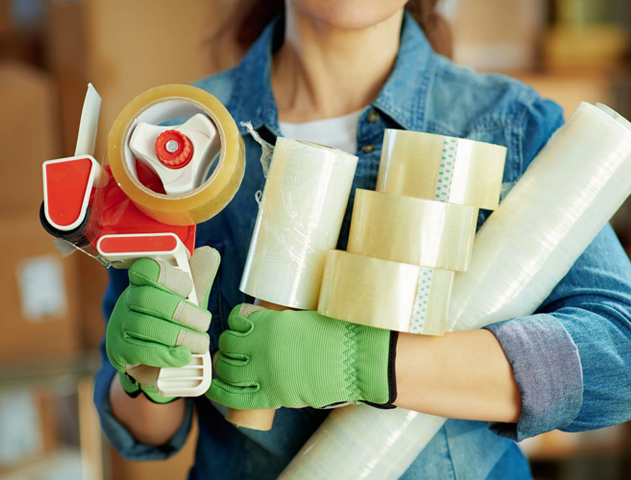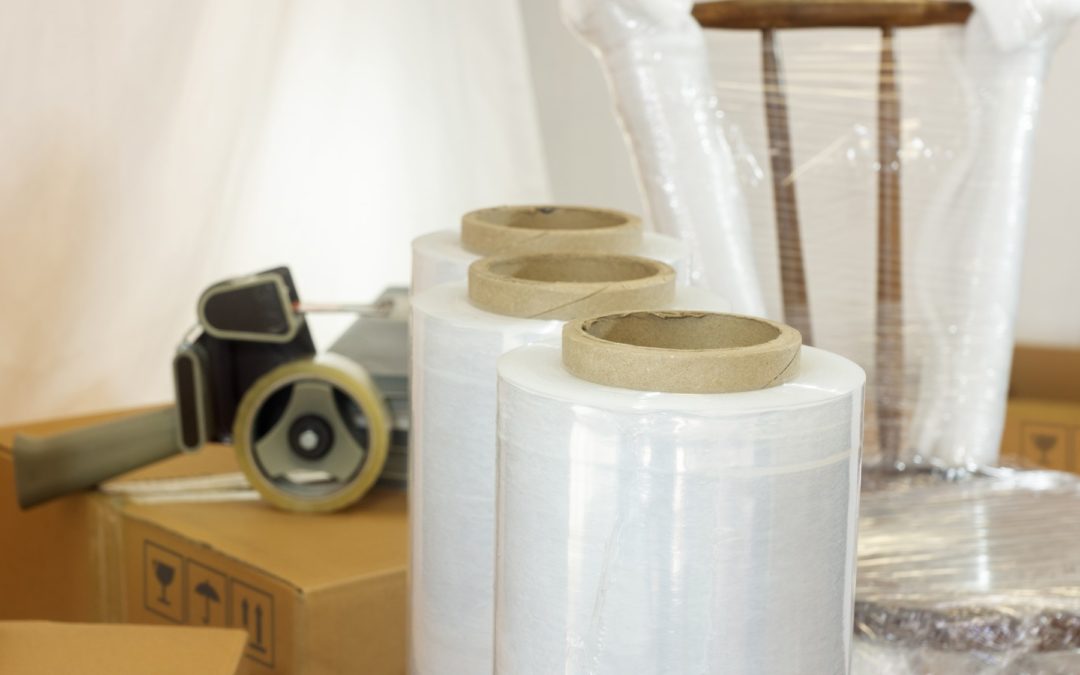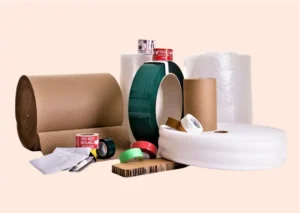Table of Contents

Article-at-a-Glance
-
Use household items like towels and clothing as alternatives to packing paper.
-
Find free moving boxes at local stores, online marketplaces, and community groups.
-
Declutter before moving to reduce the volume and cost of your move.
-
Timing purchases of moving supplies can lead to significant savings.
-
Reusable bins and borrowed supplies are cost-effective and environmentally friendly.
Moving can be a financial challenge, but with a few clever strategies, you can cut down costs without compromising the safety of your belongings. Let’s dive into some budget-friendly tips that will make your move a little easier on your wallet.
Creative Uses of Common Household Items for Packing
Before you rush out to buy packing paper, take a look around your home. You’ve got a treasure trove of packing materials right at your fingertips! Here’s how you can repurpose household items for packing:
-
Towels and Linens: Wrap dishes and other breakables in towels or sheets for protection.
-
Socks: They’re perfect for cushioning glassware or other small, fragile items.
-
Newspapers: While the ink can be messy, newspapers can be a great filler material in boxes.
-
Reusable Grocery Bags: These can hold a surprising amount of weight and are great for transporting clothes or pantry items.
Remember, creativity is key. Think about how you can cushion and protect your items without spending extra money.
Where to Find Free or Low-Cost Moving Boxes
Boxes are the backbone of moving supplies, and they can be found for free if you know where to look. Here’s where you can snag some boxes without spending a dime:
-
Local Stores: Retailers receive shipments regularly and often have an abundance of boxes they’re looking to discard. Ask your local grocery or liquor store if they have any spare boxes.
-
Online Marketplaces: Check platforms like Craigslist, Freecycle, or Facebook Marketplace for people giving away moving boxes.
-
Community Groups: Neighborhood groups or community bulletin boards can be a goldmine for free moving supplies.
Just be sure to inspect the boxes for durability and cleanliness before using them for your move.
By reusing boxes and repurposing household items for packing, not only are you saving money, but you’re also making an environmentally friendly choice.” – A savvy mover
Now, let’s explore alternatives to traditional packing paper that are both cheap and effective.
Everyday Items Repurposed for Maximum Protection
When you’re gearing up for a move, every penny counts. So, before spending your hard-earned cash on packing supplies, let’s unlock the full potential of items you already own. Consider these everyday items that can be repurposed for packing:
-
Bedding: Your blankets and comforters are excellent for wrapping around furniture to prevent scratches and dings.
-
Clothing: T-shirts and sweaters can nestle into the empty spaces in boxes, keeping items from shifting during transport.
-
Egg Cartons: They’re not just for eggs! Use them to organize and cushion jewelry or other small items.
-
Original Boxes: If you’ve kept the original packaging for electronics or appliances, they’re perfect for moving these items safely.

Maximizing Space: Packing Hacks to Save Money
Efficiency is the name of the game when it comes to packing. By maximizing space, you’ll need fewer boxes and supplies, saving you money and time. Here are some hacks to pack smarter:
First, nest smaller items inside larger ones. Pots and pans can hold spices, dish towels, or even small kitchen gadgets. Secondly, use vacuum-seal bags for clothing and linens to shrink down the volume they occupy. Lastly, disassemble furniture if possible. Taking apart bed frames, tables, and shelves can make them easier to transport and reduce the risk of damage.
Choosing the Right Box Sizes
Selecting the right box size isn’t just about what fits; it’s about handling and weight distribution. Heavier items like books should go in smaller boxes while lighter items, such as pillows and bedding, can fill larger ones. This approach makes boxes easier to lift and prevents the bottom from falling out under too much weight.
Organizing Items to Reduce Box Count
Organization is crucial when you’re looking to save on moving supplies. Grouping similar items together not only makes unpacking easier but also helps in reducing the number of boxes you use. For instance, pack all your kitchen utensils in one box and label it clearly, so you don’t end up using additional boxes for items that could have been packed together.
Moving Hacks
|
Moving Hack |
Description |
|---|---|
|
Seal Drawers |
Instead of emptying drawers, wrap them with plastic wrap to prevent spills |
|
Pad Plates |
Place packing paper or towels between plates to cushion them during the move |
|
Use Disposable Plates and Cups |
Pack a first-day basket with disposable items for easy access after moving |
|
Fill Nail Holes with Soap |
Fill nail holes with soap as an alternative to spacklE |
|
Reuse Toilet Paper Tubes |
Utilize toilet paper tubes to keep wires and cables organized during the move |
|
Seal Toiletries |
Secure toiletries with plastic wrap under the lid to prevent spills |
|
Put Room Name on Box |
Label boxes with contents and room names for easy organization |
|
Protect Plates |
Pack plates vertically to reduce breakage risk during the move |
|
Pack Clothes on Hangers |
Transport clothes on hangers in garbage bags to save time and money |
|
Use What You Have |
Utilize suitcases and bags for packing to save on boxeS |
|
Pack Appliances in a Basket |
Place essential appliances in a laundry basket for easy access after moving |
|
Color Code Boxes |
Color code boxes by room for quick identification and organization |
|
Cut Out Handles |
Create handles in boxes for easy carrying by cutting triangles on the sides |
|
Change Your Address |
Update your address with a comprehensive checklist to notify all necessary partieS |
|
Store Hardware Together |
Keep hardware in plastic bags with manuals for easy reassembly at the new place |
|
Pack Packing Supplies Last |
Keep packing supplies in a basket for convenient |
Timing Matters: When to Buy and When to Borrow
Timing your purchases can lead to significant savings. For example, buying moving supplies during sales or off-season periods can result in discounts. Besides that, consider borrowing items like dollies or furniture pads from friends or neighbors instead of renting or buying them. This act of sharing not only helps your budget but also strengthens community bonds.
Best Times to Purchase Moving Supplies
Most importantly, keep an eye out for store promotions or clearance sales. Often, moving supplies go on sale at the end of the month when moving is more frequent. Additionally, winter months tend to be slower for moving companies, so you may find better deals on supplies during this time. For more insights, check out these budget moving tricks to save on costs.
How to Borrow and Swap Moving Supplies Effectively
Borrowing and swapping moving supplies can be a smart strategy. Reach out to friends who have recently moved; they may still have boxes and packing materials to spare. Community forums and local groups are also great places to request or offer supplies. Always return borrowed items in good condition, and consider passing on your supplies to someone else after your move.

Frequently Asked Questions
It’s natural to have questions when you’re trying to navigate the world of budget moving. Below, I’ve answered some of the most common queries to help you make informed decisions and save money during your move. For additional tips, check out this guide on moving and packing on a Dollar Store budget.
How can I save money on moving supplies?
Saving money on moving supplies is all about being resourceful and planning ahead. For a quick list of tips, check out these cost-saving strategies for cheap relocation.
-
Scour for free moving boxes at local businesses or online.
-
Use newspapers, magazines, and old clothes as packing materials.
-
Borrow moving equipment like dollies or furniture sliders.
-
Buy supplies in bulk or during sales to get discounts.
-
Declutter before packing to minimize the amount of stuff you need to move.
What are some common household items that can double as moving supplies?
Many household items can be repurposed as moving supplies, saving you money and reducing waste. Some of these include:
-
Old blankets and towels for wrapping furniture and fragile items.
-
Socks for cushioning glassware and other breakables.
-
T-shirts and sweaters for filling gaps in boxes to prevent shifting.
-
Plastic grocery bags for packing shoes, toiletries, and other small items.
Are there any risks in using alternative packing materials?
While alternative packing materials can be cost-effective, there are a few potential risks to consider:
-
Make sure the materials are clean and free from pests or mold.
-
Avoid using materials that may transfer ink or dyes onto your belongings.
-
Ensure the materials are sturdy enough to provide adequate protection during the move.
Always test the materials on a small, inconspicuous area of the item to be packed first if you’re unsure.
Where can I find boxes for free?
Free boxes can often be found at:
-
Local grocery stores, liquor stores, and retail outlets, especially after large shipments.
-
Online classifieds like Craigslist, Freecycle, or Facebook Marketplace.
-
Community centers, schools, or places of worship.
-
Workplaces, as they often have a steady supply of paper and shipping boxes.
Just remember to ask politely and confirm that the boxes are free to take.
What should I do with moving supplies after I’m done with them?
Once you’ve settled into your new place, consider these options for your used moving supplies:
-
Offer them to friends or family who are planning a move.
-
Post them on online platforms for others to reuse.
-
Recycle cardboard boxes and packing materials if they’re no longer usable.
-
Repurpose boxes for storage in your new home or for future use.
By passing on or recycling your moving supplies, you’re helping the environment and possibly aiding someone else in saving money on their move.
Moving doesn’t have to break the bank. With a bit of ingenuity and these budget-friendly tips, you can protect your belongings and your wallet. Embrace the challenge of an economical move and enjoy the satisfaction that comes with smart savings. Remember, the key to a budget-friendly move is to plan, repurpose, and be resourceful. Happy moving!



